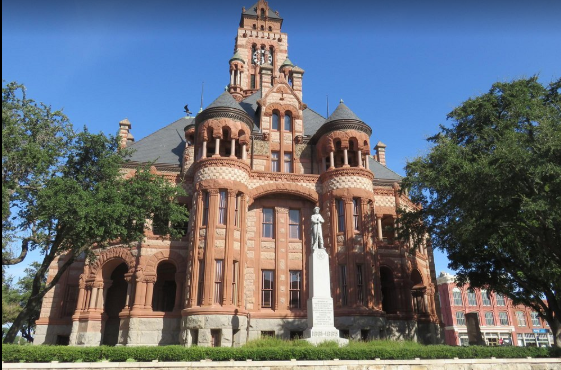History Of Waxahachie
The City of Waxahachie was officially organized in 1850 on the banks of the Waxahachie Creek, which is derived from the Indian word mean ing “Buffalo Creek.”
ing “Buffalo Creek.”
The famed Shawnee Trail, which once resounded with the bellowing of cattle being driven north to Kansas City from South Texas, ran through the center of town, now known as the Historic Downtown District. The earliest inhabitants of the area were Tonkawa, Kickapoo, Bidai, Anadarko and Waco Indians.
Since its founding, the town has been an important agricultural, commercial, educational, retail, and transportation center in North Texas. The town grew rapidly in the late 19th and 20th centuries, primarily due to the prosperous cotton industry. With the success of the early cotton barons, Ellis County quickly became the nation’s largest cotton producing county during the early 1900s. As a result, many cotton related industries, including one of the state’s first textile mills, were established in Waxahachie.
The strong economy of the late 1800s and early 1900s largely contributed to a construction boom that resulted in the rapid development of the downtown area and large residential neighborhoods with beautiful Victorian homes. In 1895, the historic Ellis County courthouse was completed and remains the town’s most impressive landmark. Visitors from all over the world travel to Waxahachie each year to visit the historic courthouse that is one of the best examples of the Romanesque Revival architecture styles in the American Southwest.
As a result of the Great Depression of the 1930s, demand for cotton significantly decreased and most of the gins and textile mills were forced to close. After World War II, Waxahachie and the rest of the nation entered the automobile age.
With the advent of cars, Waxahachie benefited significantly from the intersection of U.S. 77 and U.S. 287 at the northwest corner of the downtown area at that time. With the construction of Interstate 35 that intersected these two highways, Waxahachie became known as the Crossroads of Texas. The city's economy has continued to benefit from its proximity to these major roadways that provide easy accessibility to commercial facilities and residential development and convenient routes to other Texas cities.
In 1997 the Texas State Legislature designated Waxahachie as the “Crape Myrtle Capital of Texas.”
.
